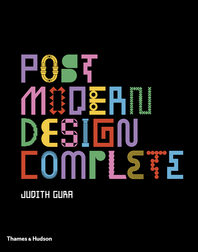Death, Life, and Libeskind






Daniel Libeskind's inclusion on the short list of architects who have been asked to propose designs for rebuilding the World Trade Center site and the region around it represents for him a great leap forward. His skewed, dismembered WTC design has been vehemently criticized for its intentional shock effect, but it is this very quality that endears it to the avant-garde. We wish to find a reasonable basis for analysis that bypasses the usual terms of debate on architectural deconstruction. That so far only generates polemics without hope of sensible resolution. Towards this end, it is necessary to dig deeper than superficial style.
Libeskind's participation in the WTC project symbolizes a jump from buildings that crystallize a particularly horrific experience, but do not seek to move on from it--such as his Jewish Museum in Berlin--into buildings that are meant to symbolize, even contribute to, "regeneration." Nevertheless, there is essentially no difference between what he believes commemorates death, and what commemorates life, for the simple reason that he gives them exactly the same geometrical properties. Whatever life he thinks he is injecting into his "regenerative" work is no more than the artificial appearance of life, as in a Golem, or Frankenstein monster--terms that will recur later in this essay.
There is indeed an enormous difference between structures that embody "life," and those that embody "death"--it is just that the currently fashionable architects don't seem to be aware of that difference, or at least of how to reflect it in their buildings. It suffices to look at Libeskind's World Trade Center proposal to see what we mean. A tall, unbalanced form with protruding, menacing components is supposed to be his answer to building on the memorial space while satisfying both the spirit of remembrance for the victims of the tragedy, and rekindling the life of the region through a regenerated urban fabric. We agree entirely with Libeskind when he says that "Architecture is an act of optimism; the site can't turn into a funerary area." Nevertheless, we are convinced that his intervention would endow the site with neither life, nor optimism.
AN ARCHITECTURE OF DEATH
Daniel Libeskind is one of a very few contemporary architects whose work constitutes a recognizable "brand." The brand consists of sharp, angular, metallic shards, with gravity-defying walls, and conveys the unmistakable thrill of transgression. The building most often used to illustrate these qualities is his Jewish Museum in Berlin. Physically impenetrable except via an underground route through a baroque courthouse, this building embodies completely in its architecture the various fates suffered in the 1930s and '40s by German Citizens who were Jewish, or who had some Jewish ancestry. The introduction into it of mundane exhibits, some time after its opening, was undertaken with fear and trembling. While the objects collected by the Museum strive to paint a portrait of Jewish LIFE--stretching over a period of one and a half millennia no less--the building that houses them is preoccupied by the DEATHS visited upon the Jewish people of Europe during the first half of the last century.
It is a testament to Libeskind's achievement that he reproduces the visceral revulsion of the Extermination Camps--not by copying their insipid, industrial Bauhaus style, but by using high-tech materials to define a specific geometry. This geometry succeeds in making us anxious and physically ill, and recreates the terrible purpose behind the camps--a rekindling of unspeakable evil, the human spirit's darkest and most horrible forces--by triggering our memory and senses strictly through form, space, and surface. A visitor to the Berlin Museum may well feel sick and depressed after going through the Jewish Department Extension, and this, we believe, is an appropriate experience.
In those of Libeskind's buildings which speak above all of despair, exile, and annihilation, there is a deliberate "geometry of death" at work--one so powerfully present that it threatens to suffocate any tokens of life that dare occupy its spaces. At the same time, we would expect to see, in those buildings which speak of regeneration, a corresponding "geometry of life." For a building to participate in regeneration there surely must be something generative about it, something life-giving in its very forms. However, search his work as you will, the "geometry of life" is nowhere to be found. Despite Libeskind's words, it is the "geometry of death" which predominates in his forms, and which ultimately compromises those of his works through which he hopes to effect reconnection or reconciliation.
These phrases, "the geometry of death" and "the geometry of life" are not used loosely here, or by way of analogy, but with the very specific meaning they have acquired over the last two decades, in scientific studies of life processes and living complexity--a body of work to which Libeskind will occasionally pay lip-service. Human beings demonstrate more affinity with buildings and environments which are shaped by processes like those that give rise to life, than those which are not, or which choose for some special reason to deploy a geometry deliberately counter to living processes. This emphasis on process is crucial, because so much of what has been deemed to be "organic" in twentieth century architecture--whether it be Frank Lloyd Wright's Guggenheim spiral in New York or the double-helix megastructures of Kisho Kurokawa's New Tokyo--has been merely a formal analogy of life, rather than life itself.






